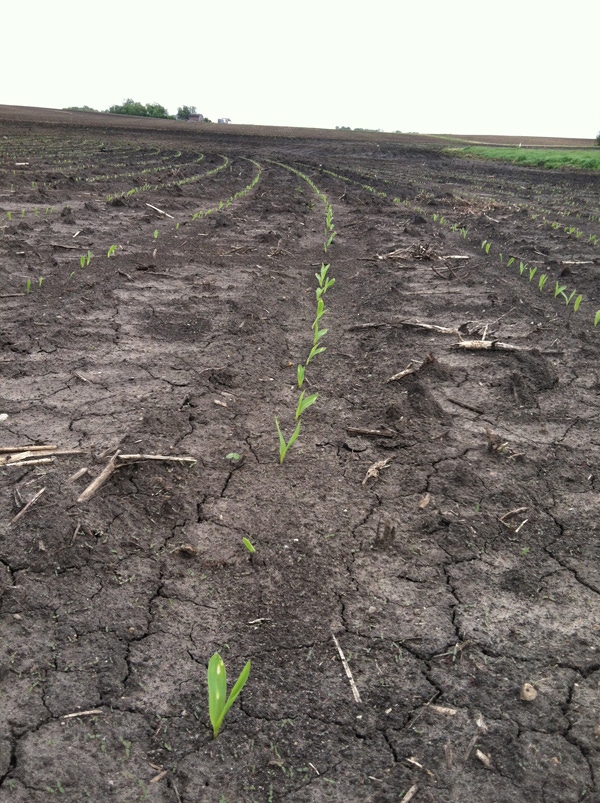May 14, 2013

One of the problems with a wet start to the season when planting gets compressed into short periods is the lack of time to apply preemergence herbicides and 28% before corn emerges. Most pre-emergence corn herbicides can be applied to emerged corn, and some of them have enough foliar activity to control small, emerged weeds without the need to add postemergence (post) herbicides. In addition, the majority of the corn hybrids are resistant to glyphosate and/or glufosinate (Liberty), which can be combined with pre-emergence herbicides to control weeds emerged at the time of application. It’s also possible to mix in some other post herbicides such as Impact, dicamba, 2,4-D, Capreno, etc., to control emerged weeds, instead of glyphosate or Liberty. Some issues to be aware of with regard to postemergence application of preemergence herbicides follow.
Only a few herbicides can be applied using 28% as the spray carrier. These are Degree, Degree Xtra and Bullet. Degree Xtra and Degree can be applied in 28% on corn up to 6 in. tall, when air temperatures are less than 85° F. Bullet can be applied to corn up to 5 in. with the same temperature restriction. Expect some leaf burn from these mixtures. All other herbicides must be applied using water as the spray carrier.
There is usually a maximum corn size specified, which can be based on growth stage or corn height. This can be as small as the V2 stage for some herbicides, such as Corvus and Balance Flex.
Most premixes or tank mixtures that contain atrazine can adequately control small broadleaf weeds, and especially those that contain another broadleaf herbicide (e.g. Lexar, Lumax, Instigate, SureStart). Grasses more than about an inch tall will require the addition of glyphosate, Liberty or other herbicide with effective grass activity.
Follow adjuvant recommendations closely to minimize the risk of injury and do not assume that it is always possible to use an adjuvant once corn has emerged.
Like what you're reading? Subscribe to CSD Extra and get the latest news right to your inbox!
Based on research with this type of approach to herbicide management, herbicides should be applied when weeds are less than about 2 in. tall to ensure that they have been prevented from causing yield loss.
Further information can be found on herbicide labels and also in the herbicide descriptions in the “Weed Control Guide for Ohio and Indiana.” However, we find that labels can lack enough information on adjuvants and tankmix partners for this situation. Be sure to check with dealers and manufacturer/distributor agronomists to get specific information when necessary.
You might also like:
7 Questions About the Farm Bill
Scout Corn Fields for These 5 Weeds
You May Also Like




